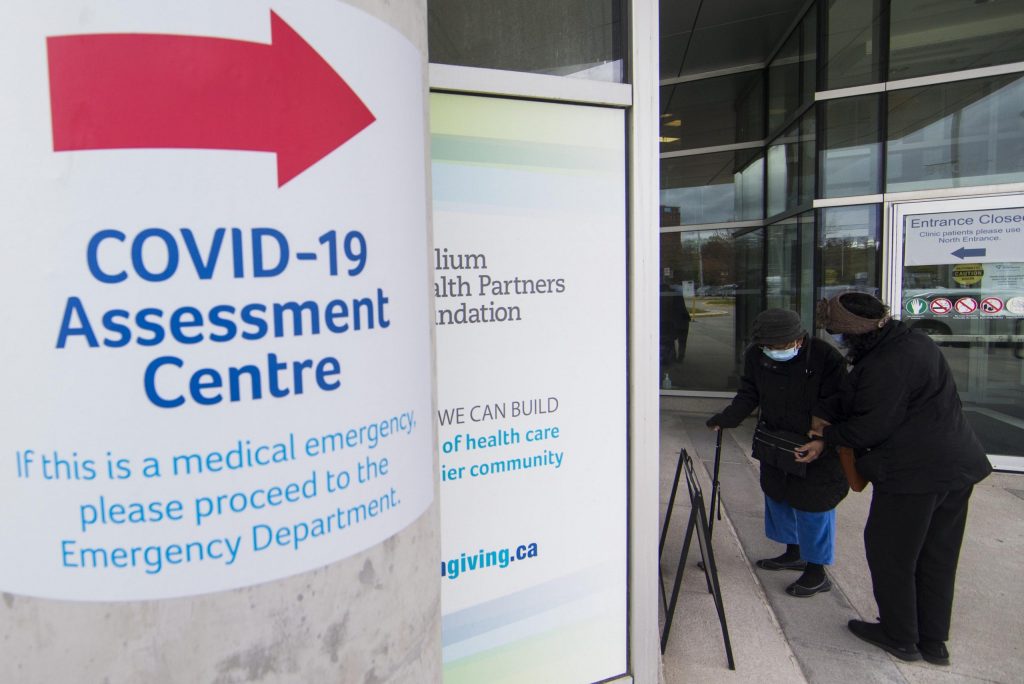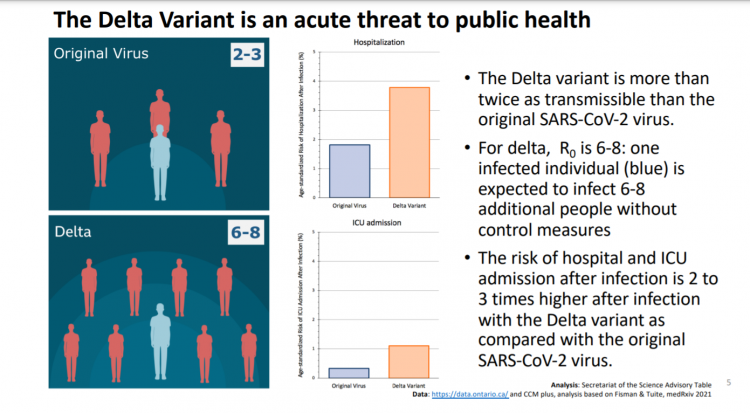Vaccinations need to increase, contacts to decrease to avoid ‘substantial’ 4th wave: Modelling

Posted September 1, 2021 6:03 pm.
Last Updated September 1, 2021 9:40 pm.
New modelling from the Ontario COVID-19 science advisory table shows vaccinations will need to increase and contacts need to decrease to 70 per cent of pre-pandemic levels to avoid a “substantial” fourth wave in the province that could see new cases surge to 9,000 a day.
The science table says vaccinations need to accelerate to 85 per cent of the population fully vaccinated in order to have an impact. The province is currently at 76 per cent.
With schools reopening and more workplaces returning to work combined with the Delta variant, the modelling shows we could reach 9,000 COVID-19 cases per day if transmission increases by 25 per cent by the beginning of October.
If transmission decreases by 25 per cent, mostly due to reduced contacts, they predict the province could see around 500 cases per day.

ICU capacity could also spike to 850 admissions by mid-October if transmission increases.
In order to reduce contacts, the science table recommends residents reduce indoor density, maintain social distancing and limit large gatherings.

Indoor masking and working from home should also continue along with implementing policies that increase vaccinations, like a proof-of-vaccination certificate that the province introduced Wednesday.
In a tweet, the table said, “If we open things up more now, and if vaccination rates stay where they are, ICUs could get overwhelmed by October — beyond what we saw in the third wave back in April and early May.”
The modelling also shows COVID-19 vaccines have had a significant impact on reducing severe illness and cases.
The latest round of modelling comes on the same day that the province announced a new vaccine certificate program that would bar unvaccinated people from a variety of businesses and services.

In a statement from the Ministry of Health, a spokesperson said they are confident Ontario is trending between the medium and best cast scenario. They also added while the forecasting projects from the best to worst case scenario, Ontario has never experienced the latter.
“There’s no question the months ahead will require continued vigilance as we confront the fourth wave,” read the statement. “We remain committed to ensuring the health and safety of Ontarians and will continue to make decisions based on the best medical advice available from Dr. Moore and his team.”








